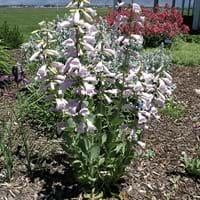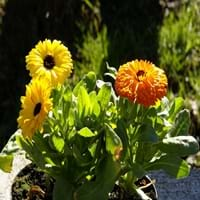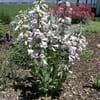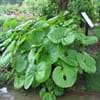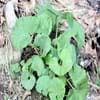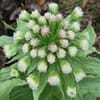Life Span
Perennial
Perennial
Type
Flowering Plants
Flowering Plants
Origin
North-Central United States, Central United States, Western United States, Texas
Europe, Mediterranean
Types
Not Available
Kablouna Gold, Fiesta Gitana, Art Shades
Habitat
Cultivated Beds, Sandy areas, Sunny Edge
gardens, Roadsides, Waste areas, wastelands
USDA Hardiness Zone
3-9
3-9
Sunset Zone
1a, 1b, 2a, 2b, 3a, 3b, 10
A2, A3, H1, 1a, 1b, 2a, 2b, 3a, 3b, 4, 5, 6, 7, 8, 9, 10, 11, 12, 13, 14, 15, 16, 17, 18, 19, 20, 21, 22, 23, 24
Habit
Upright/Erect
Clump-Forming
Flower Color
White
Yellow, Orange, Bronze, Ivory
Flower Color Modifier
Bicolor
Bicolor
Fruit Color
Not Available
Green, Tan
Leaf Color in Spring
Light Green, Gray Green
Green
Leaf Color in Summer
Gray Green
Green
Leaf Color in Fall
Gray Green
Green
Leaf Color in Winter
Not Available
Light Green
Leaf Shape
Oval to egg shaped
Oblong-lanceolate
Plant Season
Summer
Early Autumn, Spring, Summer
Sunlight
Full Sun, Partial Sun
Full Sun, Partial shade, Partial Sun
Type of Soil
Clay, Loam
Well drained
The pH of Soil
Neutral, Alkaline
Acidic, Alkaline, Neutral
Soil Drainage
Well drained
Average
Bloom Time
Late Spring, Early Summer, Summer
Early Winter
Tolerances
Drought
Drought
Where to Plant?
Container, Ground, Pot
Ground, Pot
How to Plant?
Cuttings, Divison, Seedlings
Seedlings, Transplanting
Plant Maintenance
Medium
Medium
Watering Requirements
Keep the Soil well drained, Needs a lot of moisture in the growing season, Reduce watering in winter
Requires regular watering
In Summer
Lots of watering
Lots of watering
In Spring
Moderate
Moderate
In Winter
Average Water
Average Water
Soil pH
Neutral, Alkaline
Acidic, Alkaline, Neutral
Soil Type
Clay, Loam
Moist, Well drained
Soil Drainage Capacity
Well drained
Not Available
Sun Exposure
Full Sun, Partial Sun
Partial shade
Pruning
Remove damaged leaves, Remove dead branches, Remove dead leaves
Cut or pinch the stems, Remove damaged leaves, Remove dead branches, Remove dead leaves
Fertilizers
All-Purpose Liquid Fertilizer
All-Purpose Liquid Fertilizer
Pests and Diseases
Red blotch
Red blotch
Plant Tolerance
Drought
Drought
Flower Petal Number
Single
Double, Semi-Double
Foliage Texture
Medium
Medium
Foliage Sheen
Matte
Matte
Attracts
Birds, Bumblebees
Beetles, Butterflies, Flying insects
Allergy
no allergic reactions
Dizziness, Itchiness, Nausea, Skin rash, Swelling
Aesthetic Uses
Showy Purposes
Showy Purposes
Beauty Benefits
Not Available
Good for skin and hair, Skin cleanser, Skin Problems, used as a dye
Environmental Uses
Air purification
Air purification
Medicinal Uses
Analgesic, Febrifuge, Stomachic
Curing mumps and measles, Cuts, Reduces toothache, Surgical wounds, Throat infection, Ulcers
Part of Plant Used
Root
Flowers, Leaves, Root
Other Uses
Chewing
Cosmetics, Sometimes used for making wine, Used as an insecticide, Used as essential oil, Used As Food, Used as Ornamental plant, Used in salads
Used As Indoor Plant
No
Insignificant
Used As Outdoor Plant
Yes
Yes
Garden Design
Rock Garden / Wall, Wildflower
Groundcover, Showy Tree
Botanical Name
PENSTEMON grandiflorus 'Prairie Snow'
CALENDULA officinalis
Common Name
Large Beardtongue, Prairie Snow Beardtongue
Pot Marigold
In Hindi
Large Beardtongue
Pot Marigold
In German
Large Beardtongue
Ringelblume
In French
Large Beardtongue
pot Marigold
In Spanish
Large Beardtongue
Caléndula
In Greek
Large Beardtongue
καλέντουλα
In Portuguese
Large Beardtongue
pot Marigold
In Polish
Large Beardtongue
Pot Marigold
In Latin
Large Beardtongue
Zinnia Pot
Phylum
Magnoliophyta
Vascular plant
Class
Magnoliopsida
Magnoliopsida
Order
Scrophulariales
Asterales
Family
Scrophulariaceae
Asteraceae
Genus
Penstemon
Calendula
Clade
Angiosperms, Asterids, Eudicots
Angiosperms, Asterids, Eudicots
Tribe
Not Available
Calenduleae
Subfamily
Not Available
Asteroideae
Number of Species
Not Available
Importance of Large Beardtongue and Pot Marigold
Want to have the most appropriate plant for your garden? You might want to know the importance of Large Beardtongue and Pot Marigold. Basically, these two plants vary in many aspects. Compare Large Beardtongue and Pot Marigold as they differ in many characteristics such as their life, care, benefits, facts, etc. Every gardener must at least have the slightest clue about the plants he wants to plant in his garden. Compare their benefits, which differ in many ways like facts and uses. The medicinal use of Large Beardtongue is Analgesic, Febrifuge and Stomachic whereas of Pot Marigold is Curing mumps and measles, Cuts, Reduces toothache, Surgical wounds, Throat infection and Ulcers. Large Beardtongue has beauty benefits as follows: Not Available while Pot Marigold has beauty benefits as follows: Not Available.
Compare Facts of Large Beardtongue vs Pot Marigold
How to choose the best garden plant for your garden depending upon its facts? Here garden plant comparison will help you to solve this query. Compare the facts of Large Beardtongue vs Pot Marigold and know which one to choose. As garden plants have benefits and other uses, allergy is also a major drawback of plants for some people. Allergic reactions of Large Beardtongue are no allergic reactions whereas of Pot Marigold have Dizziness, Itchiness, Nausea, Skin rash and Swelling respectively. Having a fruit bearing plant in your garden can be a plus point of your garden. Large Beardtongue has no showy fruits and Pot Marigold has no showy fruits. Also Large Beardtongue is not flowering and Pot Marigold is flowering. You can compare Large Beardtongue and Pot Marigold facts and facts of other plants too.
